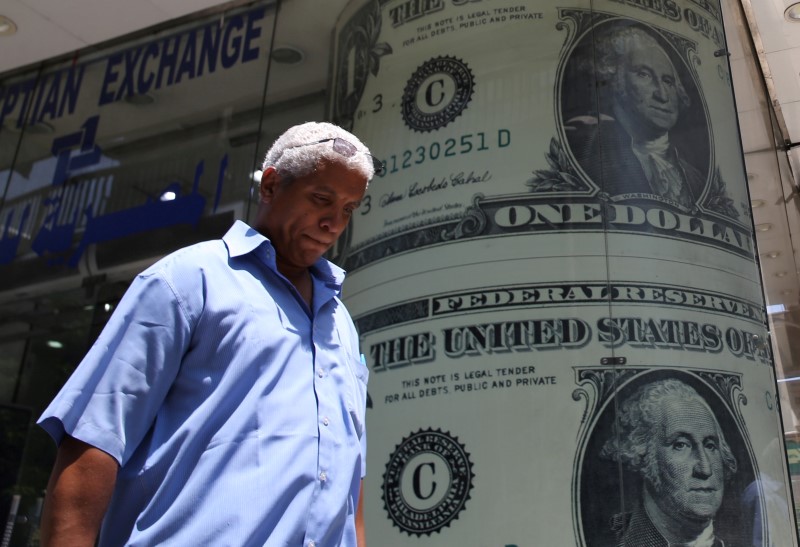[ad_1]

© Reuters.
Investing.com – The U.S. dollar edged higher in early European trade Monday, partially recovering after Friday’s losses in the wake of softer-than-expected inflation data as a holiday-shortened week gets underway.
At 02:55 ET (06:55 GMT), the , which tracks the greenback against a basket of six other currencies, traded 0.2% higher at 102.75, having dropped 0.4% on Friday.
Dollar looking for Fed cues
The dollar was hit on Friday by in May, suggesting the year-long tightening cycle by the Federal Reserve was having some impact.
However, traders have been reluctant to push the greenback much lower Monday, with activity limited ahead of Tuesday’s Independence Day holiday and with plenty of important economic data due which could offer further clues as to whether the is likely to resume its rate-hiking cycle after pausing in June.
The week’s main event will be Friday’s U.S. , with economists expecting the economy to have added 225,000 jobs in June, a slowing from May’s 339,000 addition, but still a healthy result.
The Fed is also set to publish the of its June 13-14 meeting when it held rates steady after 10 straight rate hikes on Wednesday.
German manufacturing PMI set to fall further
fell 0.2% to 1.0890, ahead of the release of manufacturing PMI data for most of Europe, which is expected to show this important sector remains in the doldrums.
Germany, the eurozone’s dominant manufacturing base, is expected to show a release of 41.0 in June, a fall from 43.2 in May.
European Central Bank policymaker is scheduled to speak at a financial conference later Monday and will undoubtedly press the case for more to combat even as economic growth slows in the region.
The euro has also been pressured by the continued riots in France, the eurozone’s second largest economy, after a police officer killed a teenager in a suburb northwest of Paris.
fell 0.1% to 1.2688, after rising 5% in the first six months of the year, with traders continuing to price in more rate hikes from the as the country’s remained at 8.7% in May, the highest of any major advanced economy.
Yen on intervention watch
rose 0.3% to 144.75, trading just below the psychologically important barrier of 145 after data showed Japan’s factory activity contracted in June after expanding for the first time in 7 months in May.
The final for June came in at 49.8, returning below the 50.0 threshold that separates growth from contraction, after May’s 50.6 reading.
Finance Minister Shun’ichi Suzuki said on Friday Japan would take appropriate steps in response to excessive yen weakening, putting traders on edge given Japan bought yen in September, its first foray in the market to boost its currency since 1998, at around these levels.
Elsewhere, the risk-sensitive fell 0.3% to 0.6648, while edged lower to 7.2499 after a private survey showed that grew slightly more than expected in June.
[ad_2]
Source link
(This article is generated through the syndicated feed sources, Financetin doesn’t own any part of this article)
